Living in a home that doesn’t get much sunlight can make rooms feel cramped and a bit gloomy. You might find yourself battling those dark corners, adding lamp after lamp, and still not quite getting the brightness you want.
Remember to repin your favorite images!
If you want to really change the mood of these spaces, you’ll need to layer a few smart design tricks—both to boost the light you have and to fake it where it’s missing. Check out these ideas for inspiration.
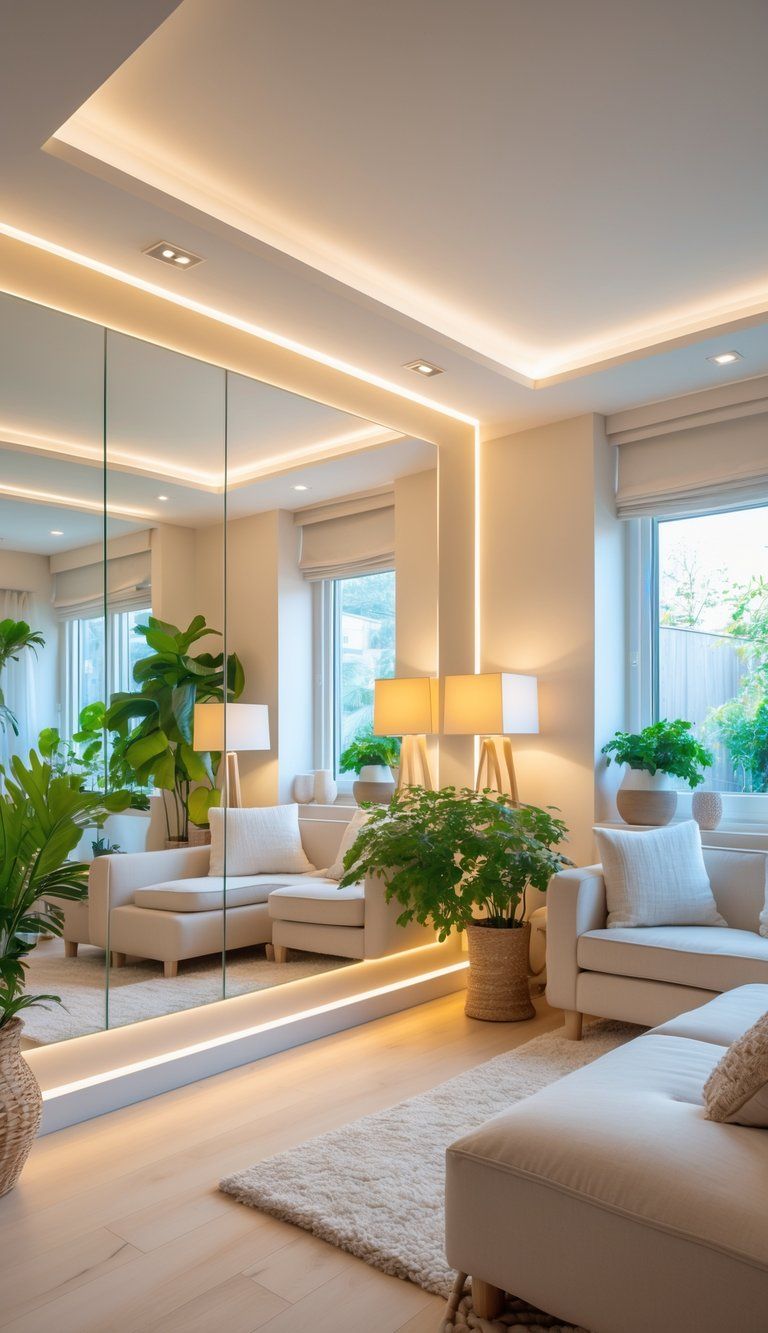
You don’t have to start tearing down walls or invest in new windows just to bring in more light. Try switching to paint with a high Light Reflective Value—aim for 80 or higher.
Add reflective surfaces and hang mirrors in key spots. These little moves help bounce whatever daylight you get throughout the room.
Light wells, solar tubes, and glass panels can really shake things up, especially for rooms stuck in the middle of the house. These features channel sunlight from outside right into spaces that never see a window.
If you layer these with a thoughtful lighting plan—think lamps and fixtures at different heights—you’ll find your home feels brighter and more welcoming all day, even if you barely get any natural light.
Understanding the Challenges of Limited Natural Light
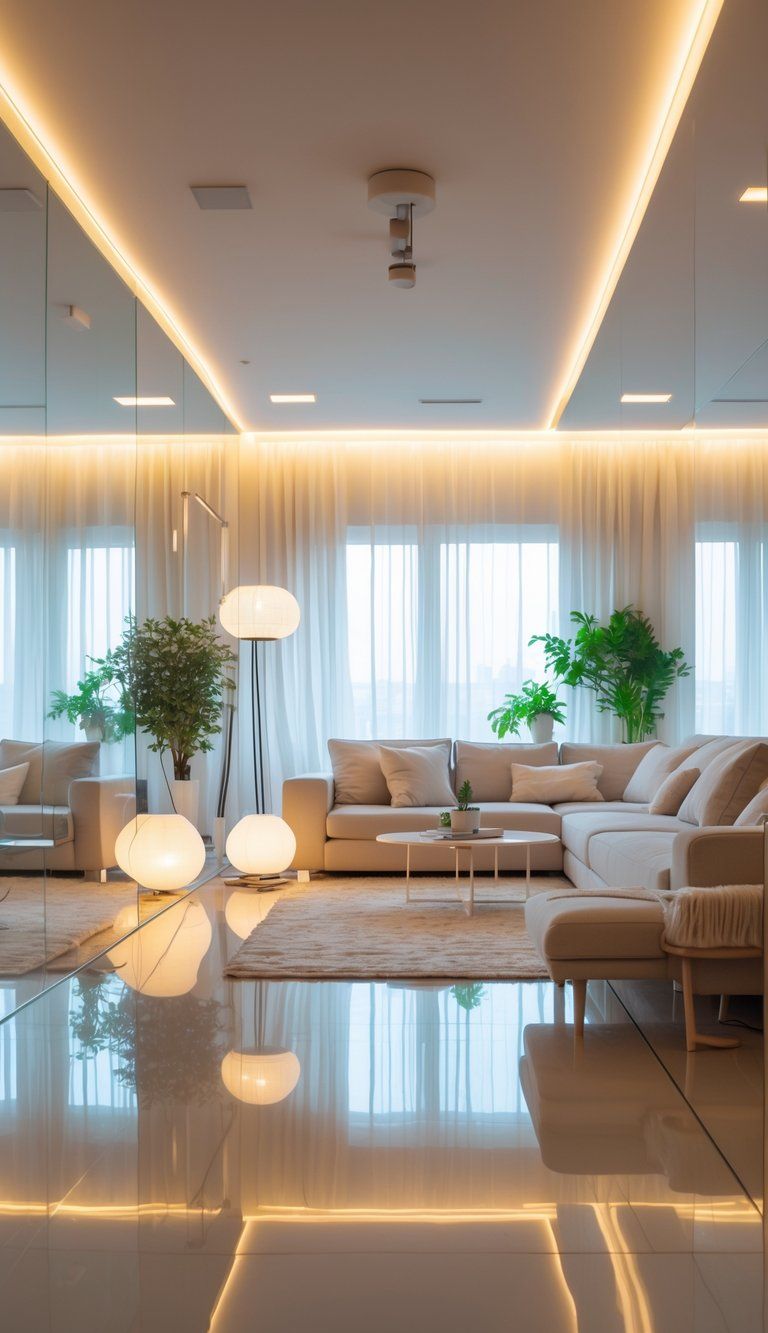
A lot of homes just don’t get enough sunlight, and it really changes how a space feels. Beyond looks, it can even affect your mood or energy if you’re not careful.
Common Causes of Low Natural Light
North-facing rooms usually get the least direct sunlight. These spaces feel cooler and darker compared to south-facing ones.
In cities, tall buildings can block light from even reaching your windows. Sometimes the trees you love or your porch’s deep overhangs cast more shade than you’d expect.
Small or badly placed windows make it tough for natural light to get in. Older homes often have smaller windows, probably because folks worried about heating bills back then.
Long hallways, rooms with no exterior walls, and basements all struggle with daylight. The layout itself can work against you.
Impact of Insufficient Light on Interiors
When you don’t get much natural light, rooms tend to feel smaller and less inviting. Colors look dull and not quite like you imagined.
Some common issues:
- It’s hard to tell similar colors apart
- Reading or doing close-up work strains your eyes
- Shadows make it tricky to move around
Your furniture and art just don’t pop in dim lighting. You miss out on details and textures, and the whole vibe falls flat.
Cleaning gets tougher too, since dust and dirt hide in the shadows. You might not even realize what you’re missing until you brighten things up.
Effect on Mental Health and Wellbeing
Natural light helps your body make vitamin D and keeps your circadian rhythm on track. Without enough sun, your sleep can get weird.
Studies have found that people living in darker homes often feel:
- More seasonal affective disorder (SAD)
- Mood swings or fluctuations
- Lower energy
- Less productive
Dim rooms can give you headaches or make your eyes tired. That physical strain just adds to the mental drag of living in a shadowy space.
So, finding ways to boost light—especially in winter—really matters. Even small changes can make a big difference in how you feel every day.
Maximizing Available Natural Light
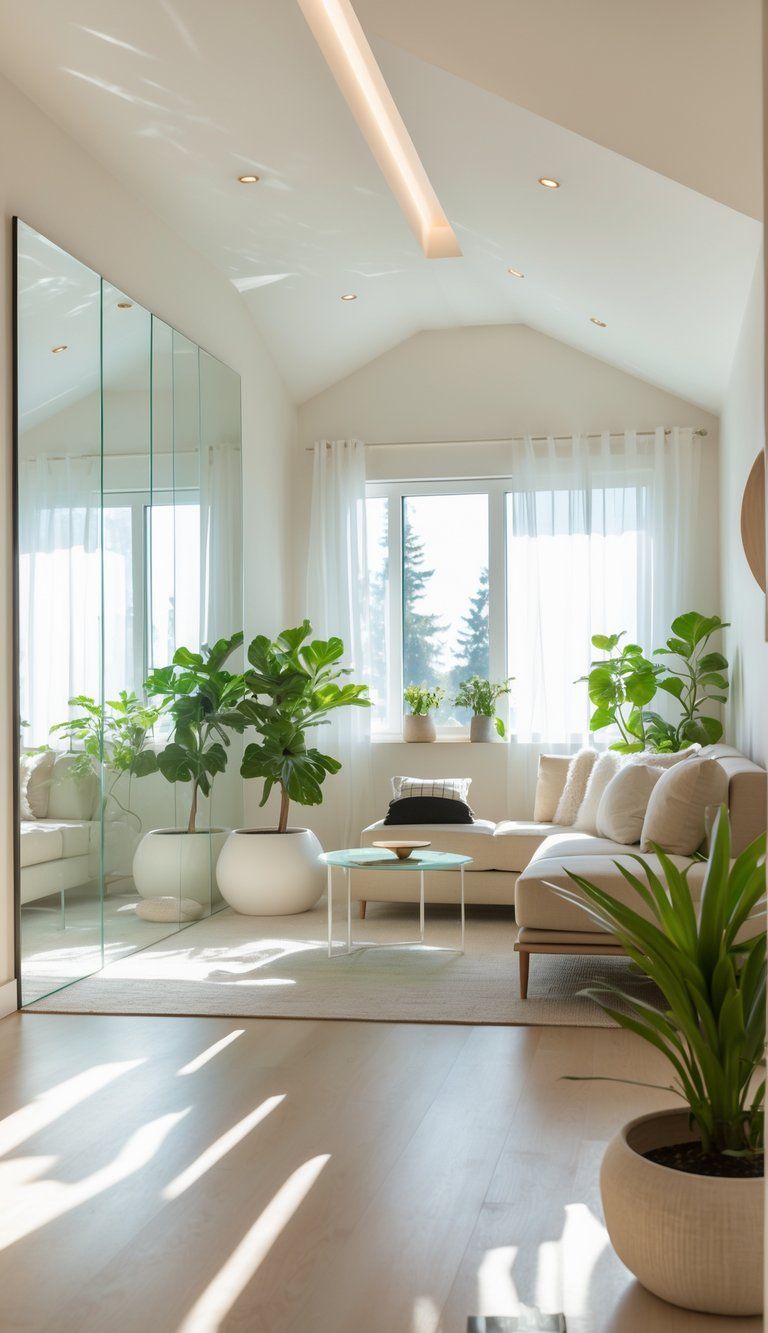
You can totally transform a dim home with some smart design moves. Making the most of the light you do have starts with where you put your windows and which ones you choose.
Optimal Window Placement
Where you put your windows changes everything. South-facing windows pull in the most daylight (at least in the northern hemisphere), so put these in your main living areas if you can.
East-facing windows grab that gentle morning sun, which feels great in kitchens or breakfast nooks.
If you’re short on exterior wall space, try adding transom windows above doors or clerestory windows up near the ceiling. These let light reach deeper inside but still keep your privacy.
Window height matters too. Taller windows push light further into the room. If you can, go higher instead of wider to get more sun without losing wall space.
Choosing The Right Window Types
The style of your windows really affects how much light you get. Floor-to-ceiling windows bring in tons of sunlight and make rooms feel bigger.
Some options to consider:
- Casement windows: They swing open wide, letting in air and light
- Bay or bow windows: These catch light from different angles and create cozy nooks
- Glass blocks: You get privacy but still let the sun filter through
For those north-facing rooms that barely see the sun, pick windows with thin frames and clear glass. Low-E coatings help keep your space comfortable without blocking much light.
If you can’t add side windows, skylights and light tubes are lifesavers for interior rooms. They pull sunlight in from above.
Architectural Design Solutions for Increased Light
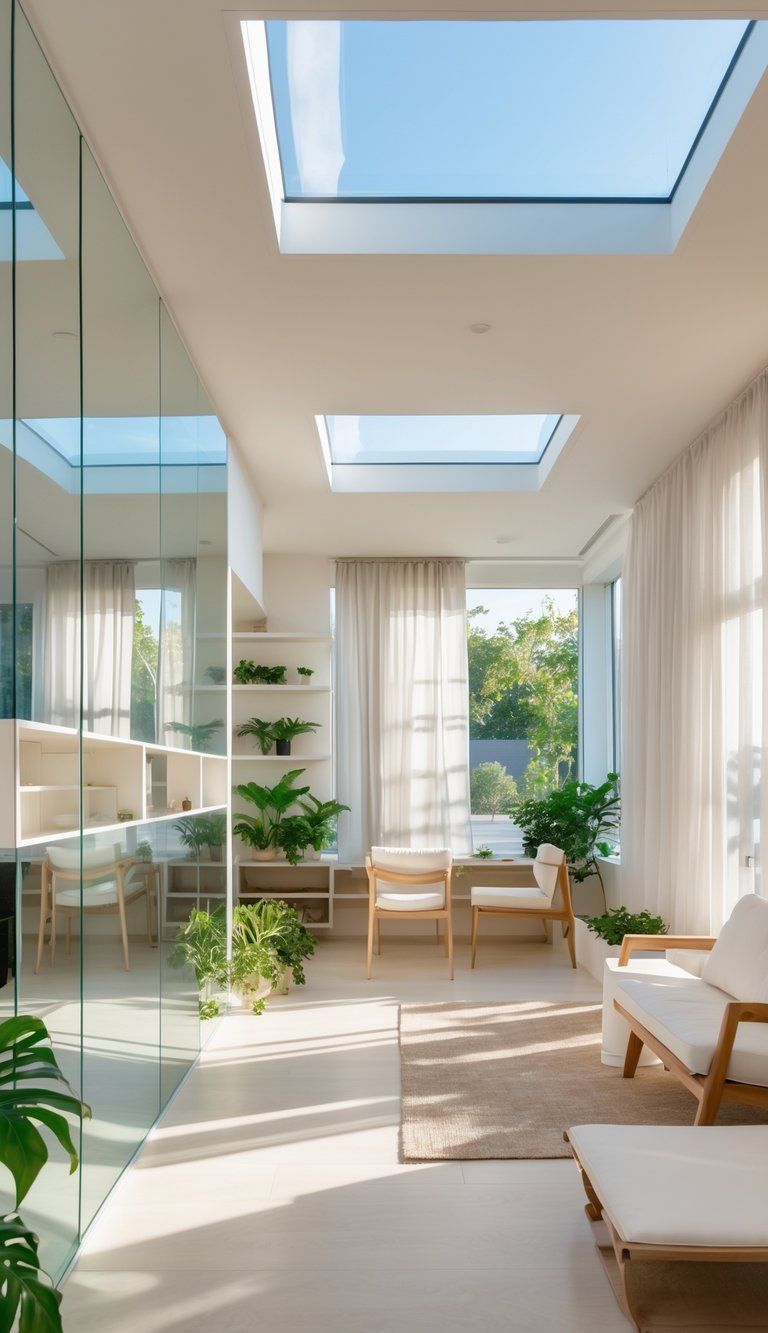
Sometimes, you just need to make bigger changes. Architectural tweaks can really open up dark rooms and let sunlight reach places it never did before.
Incorporating Skylights and Solar Tubes
Skylights are a game-changer. They can bring in up to three times more light than a regular window of the same size.
To get the most out of skylights, put them on north-facing roofs for steady, indirect light without too much heat. Ceiling windows like these can really transform a space.
If skylights aren’t doable, solar tubes are a solid backup. These shiny tubes run from your roof into interior rooms, channeling sunlight where you need it.
They’re perfect for hallways, bathrooms, or closets that never see the sun. Most are about 10-14 inches wide and can brighten up to 300 square feet.
Solar tubes are usually easier to install than skylights. They only need a small roof cutout and don’t mess with your ceiling much.
Installing Glass Panels and Glass Doors
Glass panels and doors let light flow between rooms, even if you want to keep spaces separate. If you don’t need total privacy, swap out solid walls for glass partitions.
This works especially well between living rooms and hallways, or kitchens and dining areas. For the outside, big windows or glass doors make a huge difference.
French doors or sliding glass doors can replace regular doors and pull more daylight into nearby spaces. Light wells—vertical shafts from the roof down—bring sunlight into lower floors or central rooms that never get direct light.
When you go for glass, pick low-E glass to cut UV and heat but still let in visible light.
Strategic Use of Reflective and Light-Enhancing Surfaces
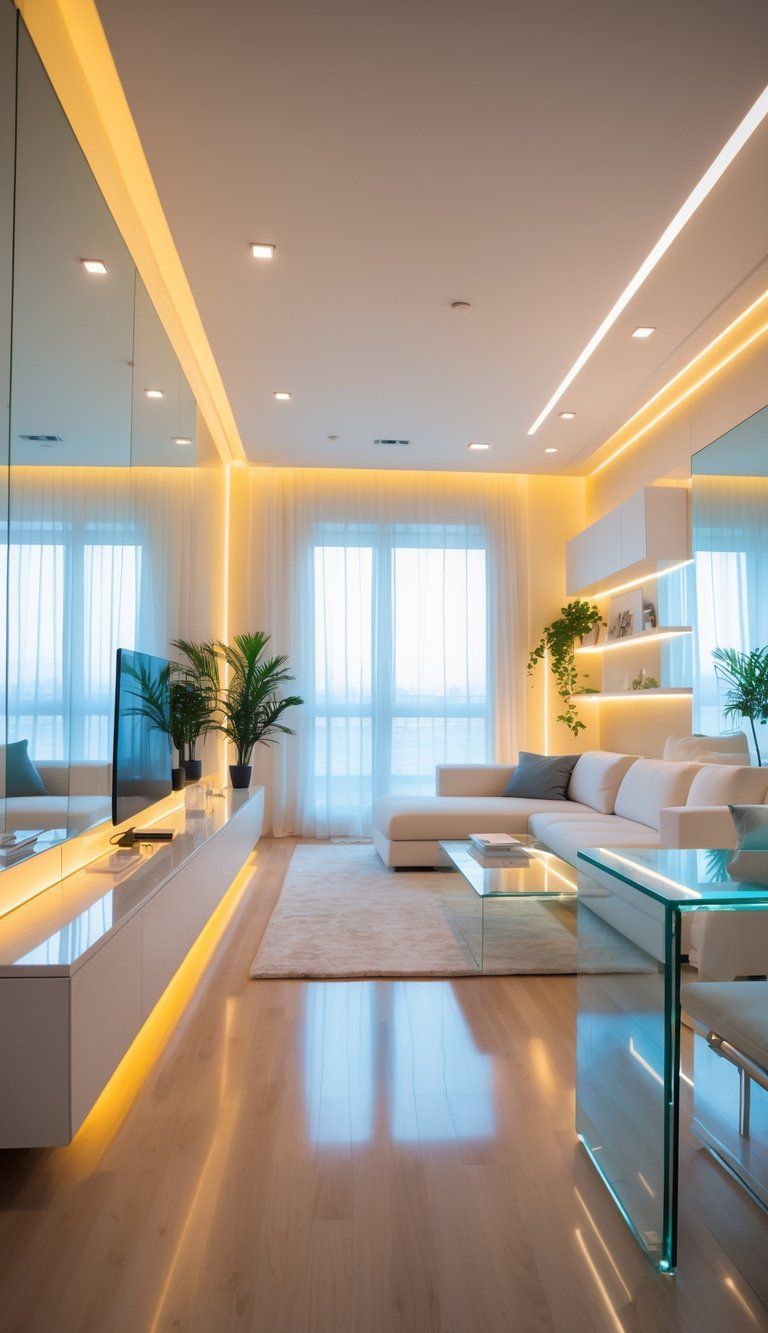
Reflective surfaces can do wonders for a dark room. They bounce light around, making spaces feel bigger and brighter—no electrician needed.
Placing Mirrors Effectively
Mirrors are almost magic in dim homes, if you know where to put them. Hang a big mirror right across from a window, and it’ll double the daylight in your room.
Try putting a mirror at the end of a dark hallway to reflect light and make it feel longer. In dining rooms, a mirror behind a light fixture can really amplify the glow.
Don’t just stick to the walls. Mirrored furniture, cabinet doors, or even mirrored ceiling details can bounce light in unexpected ways.
If you want the best effect, tilt mirrors slightly upward—they’ll catch more sky and less floor.
Go for the biggest mirror you can fit. Tiny mirrors look cute but don’t do much for the light.
Selecting Reflective Surfaces and Metallic Accents
You’ve got more options than just mirrors. Glass tables let light travel through instead of soaking it up, making rooms feel less heavy.
Acrylic furniture works the same magic and looks modern too.
Metallic touches help a lot:
- Brass or copper pendants throw off warm reflections
- Chrome adds a bit of sparkle without being too much
- Silver frames on the walls catch and scatter light
Glossy tile backsplashes in kitchens bounce both natural and artificial light. In bathrooms, glass tiles shimmer even if you only have a little light.
Light-colored stone countertops with sparkly bits, like quartz, reflect light without being harsh. Even your fabrics matter—silky or satiny textiles shine more than flat cotton or linen.
Benefits of High-Gloss Paint Finishes
High-gloss paint is super reflective. It can bounce back up to 85% of the light that hits it, compared to just 35% with flat paint.
Painting a whole room in gloss might feel intense, but you can use it in smaller doses:
- Go high-gloss white on the ceiling to reflect light down
- Try one accent wall in a light gloss for a big boost
- Use gloss on trim and moldings to make spaces pop
Just know that glossy paint shows every flaw, so you’ll want to prep your walls well. Sand, prime, and do a few thin coats for the best look.
If full gloss feels like too much, semi-gloss is a good compromise. It still reflects plenty of light and hides wall imperfections better. Plus, it’s easier to clean than matte paint.
Artificial Lighting Design to Boost Brightness
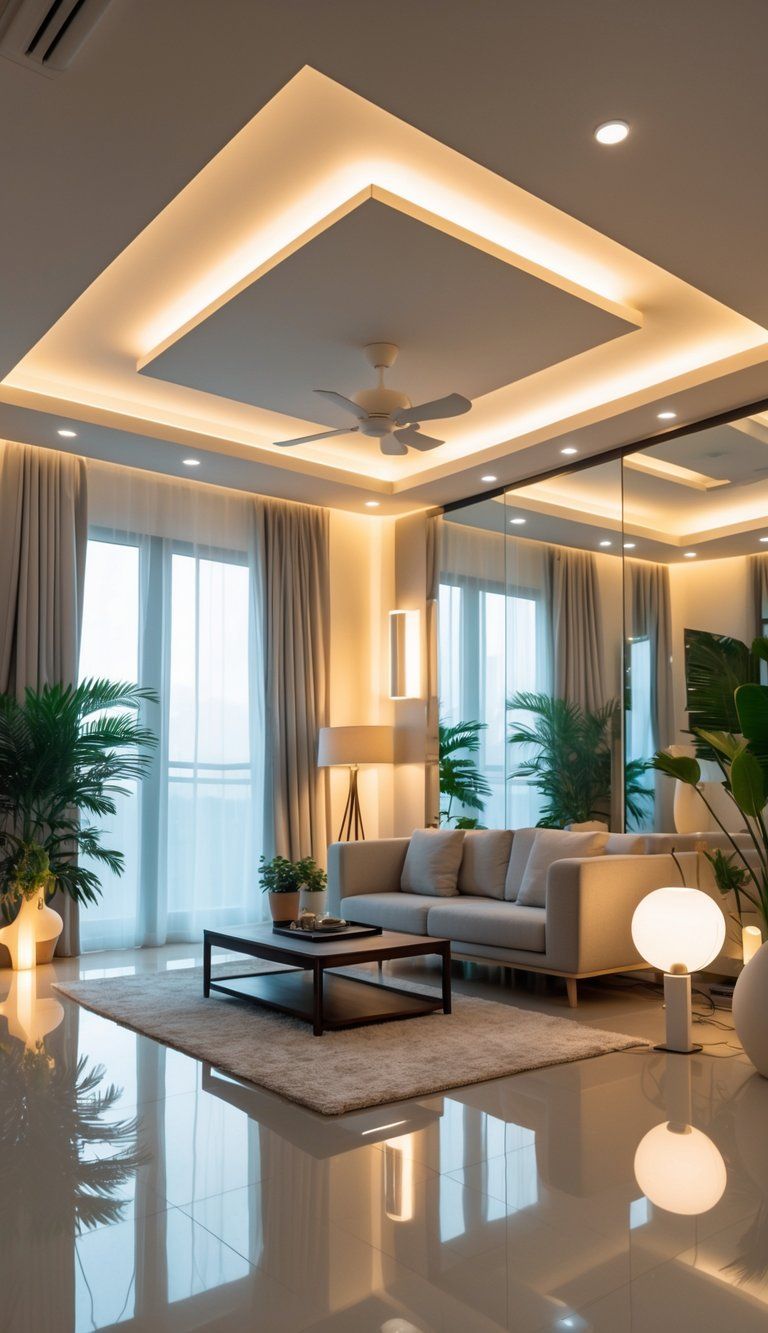
You can completely change the mood of a dark room with the right lighting choices. Mixing up your light sources and placing them thoughtfully makes any space feel naturally bright—even if you don’t have a single window.
Layering Ambient, Task, and Accent Lighting
Great lighting design uses three layers. Ambient lighting is your main source, setting the overall tone—think recessed lights or simple ceiling fixtures that spread light everywhere.
Task lighting targets where you actually need to see. Desk lamps, under-cabinet strips, or adjustable floor lamps work great near reading chairs, kitchen counters, or workspaces.
Accent lighting gives the room depth and a bit of drama. Wall sconces, picture lights, or spotlights can highlight art or cool architectural features.
When you get all three layers working together, the room feels balanced and bright. It’s almost like having extra windows, honestly.
Selecting and Positioning Multiple Light Sources
Try using several light sources at different heights to get rid of harsh shadows and add more depth. I usually aim for at least three lights in a room—one on the floor, one on a table, and one up on the ceiling.
Here are some placement ideas:
- Corners: Stick uplights in dark corners so they bounce light off the walls and ceiling.
- Walls: Mount sconces at about eye level (somewhere around 5.5 to 6 feet up) for a soft, cozy glow.
- Ceilings: Put downlights about 2-3 feet out from the walls so they wash light down the surface.
Pick your bulbs with care. LEDs in the 2700K-3000K range make spaces feel warm and inviting, but if you want a cooler, more energetic vibe, go for 3500K-4000K. Look for bulbs with a CRI of 90 or higher if you want colors to look as natural as possible.
Smart bulbs and dimmer switches make a big difference. You can tweak the brightness any time of day, which is honestly a game changer.
Space Planning and Layout for Brighter Homes
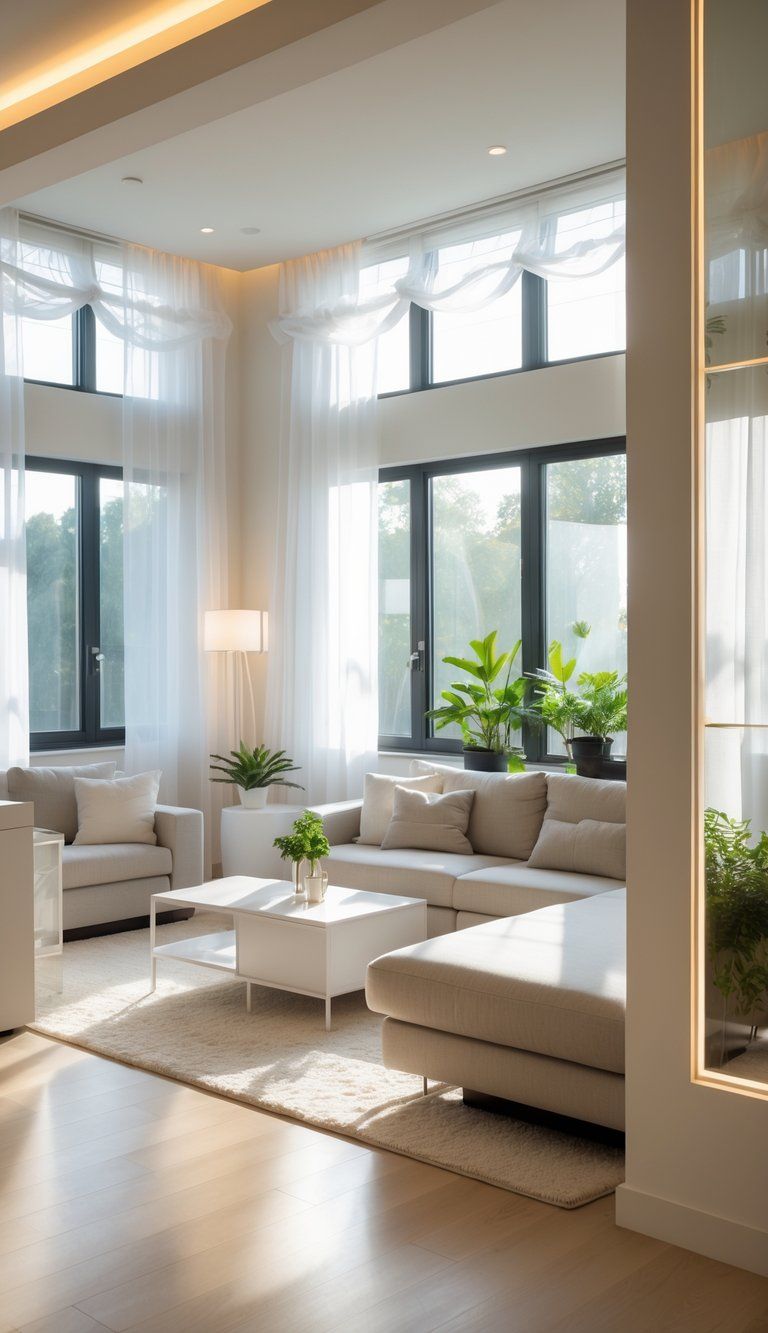
How you set up your space really changes how much daylight gets in. Sometimes just moving things around can totally brighten up a dark room.
Embracing Open Floor Plans
Open floor plans let light travel further. Tearing down non-load-bearing walls between your kitchen and living areas can make sunlight reach spots it never touched before.
If you need some separation, swap solid walls for partial ones or glass partitions. They keep things a bit divided but still let light pass through.
Island counters can define the kitchen without blocking light. You can also use furniture placement to create little “zones” instead of putting up walls.
Open layouts also mean you get better views of windows from different spots. Even if you aren’t sitting right next to a window, you’ll still catch the light.
Reducing Clutter to Maximize Light
Clutter just eats up light and makes rooms feel smaller. Start by clearing off windowsills and keeping the area around windows open—don’t let stuff pile up there.
Pick furniture with legs instead of bulky pieces that sit flat on the floor. That way, light can travel underneath and the room feels lighter. Glass or acrylic tables barely block any light at all.
Try not to jam every shelf full. Leaving some empty space on bookshelves or in display cabinets lets light bounce around more.
Go for smart storage like built-in cabinets or under-bed bins. Hiding clutter away makes a room look brighter and more open.
Decor and Furnishing Strategies for Light-Deficient Rooms
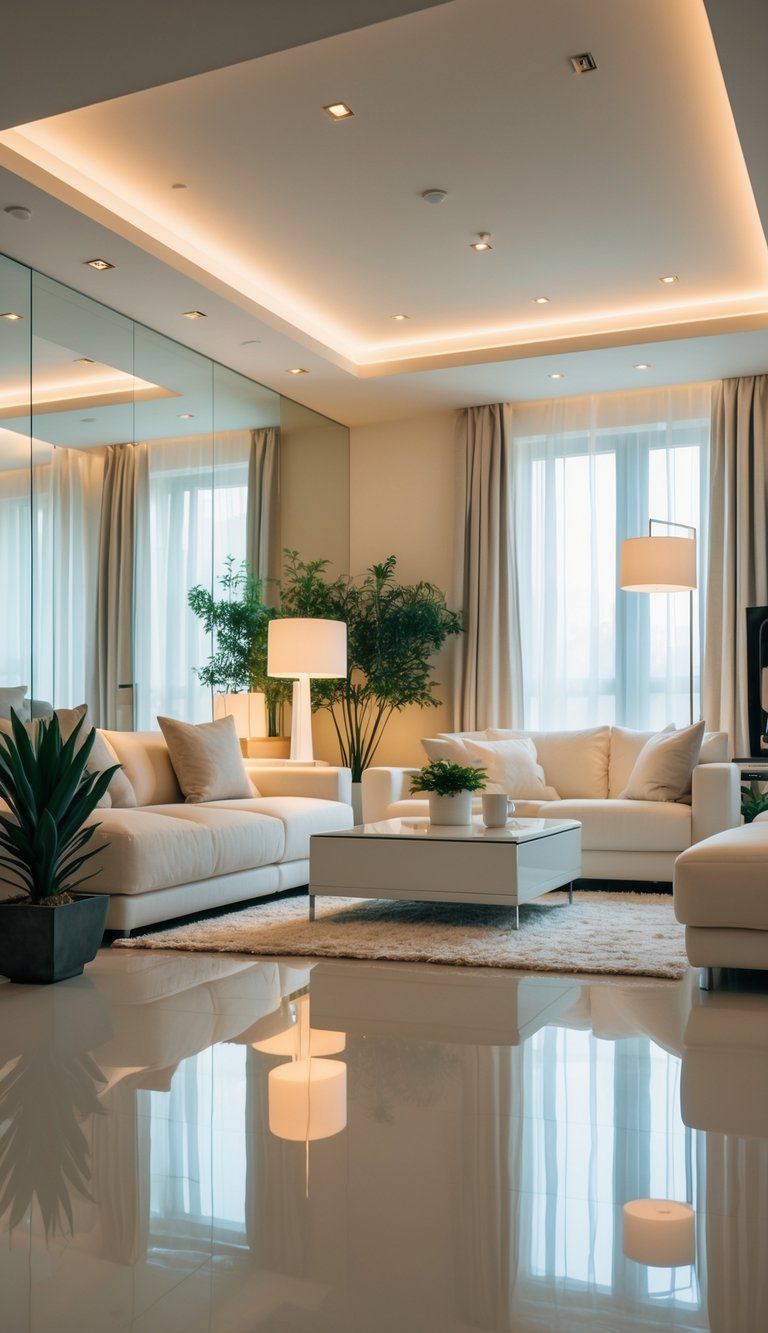
If your room doesn’t get much sunlight, the right decor and furniture choices can make a huge difference. Sometimes just swapping out a few things makes the whole place feel lighter.
Color Choices for Walls and Furniture
Lighter colors really help in dim rooms. I’d paint the walls in soft whites, creams, or even pale pastels—these shades reflect whatever daylight sneaks in. Glossy or satin finishes bounce light better than flat paint.
Stick to lighter furniture too. Blonde woods, white, or pale gray pieces reflect light, while dark woods or black furniture just soak it up.
Best Light-Enhancing Colors:
- Soft whites (but skip the super stark whites in really dark rooms)
- Pale blues and greens
- Light grays with a bit of warmth
- Buttery yellows
- Soft blush pinks
Mirrored or glass furniture can make a room feel airier and reflect light all over. Even little things—like a glass lamp or metallic picture frame—can help.
Minimal Window Treatments Versus Heavy Curtains
Heavy curtains just block out what little light you have. Swap them for sheers or lightweight fabrics that let light filter through. Some good options:
- Roman shades in light fabrics that you can pull up all the way
- Blinds that open completely so you get the most window exposure
- Sheer curtains for diffusing light but still keeping some privacy
- Cafe curtains that only cover the bottom part of the window
If you’re worried about privacy, try window films that let light in but block views from outside. In bedrooms, layer sheer panels with blackout blinds so you can control light when you need to sleep.
Keep furniture at least 30 inches away from windows so you don’t block the light. If you set up seating at a 45-degree angle to the windows, everyone gets a bit more brightness.
Integrating Indoor Plants
Even if your place is on the dim side, you can still have houseplants. You just need to pick the right ones. Plants add life to a room and help clean the air, too.
Best Low-Light Plants:
- Snake plants
- ZZ plants
- Pothos
- Peace lilies
- Cast iron plants
Put plants near windows, but don’t block the glass. If you have a really dark corner, rotate the plant to a sunnier spot now and then to keep it healthy.
Try plant stands or wall-mounted planters to get greenery up off your tables. Light-colored pots reflect more light and help brighten corners.
If your room is super dark, get a good grow light. It’ll keep your plants happy and add a bit more light to the space.
Creating a Welcoming and Airy Atmosphere
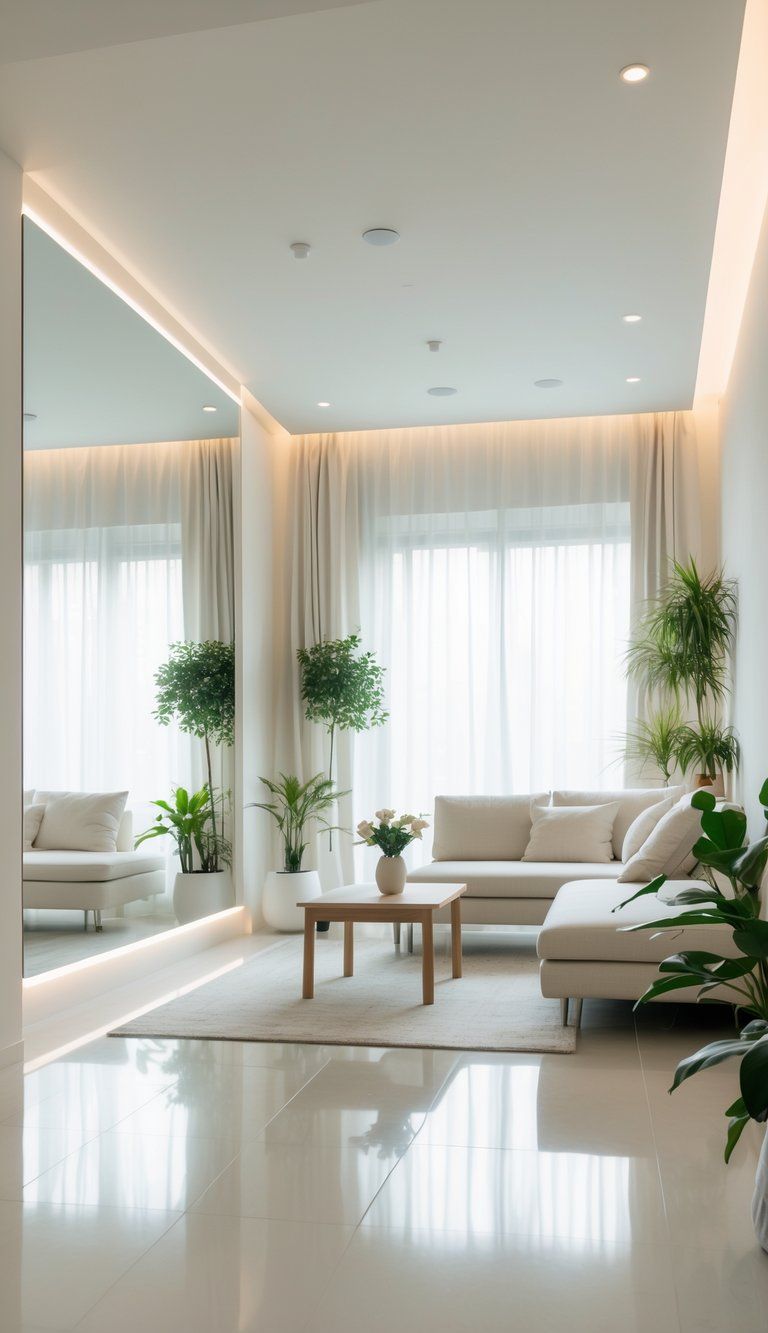
Even if your home doesn’t get much natural light, you can still make it feel bright and open. With a few clever design tweaks, those dark rooms can become your favorite, light-filled spaces.
Designing Bright and Airy Interiors
Pick light, neutral colors for your walls and the biggest furniture pieces. Whites, soft creams, and pale grays really bounce around whatever natural light you’ve got, so your rooms end up feeling bigger.
Try painting the ceiling a shade lighter than the walls. It’s a simple trick, but it draws your eyes up and makes the whole space feel taller.
Mirrors can work wonders for brightening a room. I like to put them right across from windows, so they catch and reflect all the daylight. Just one big mirror can totally change how spacious and bright a room feels.
Don’t just stick with one overhead light. Mix things up by layering your lighting—ambient, task, and accent lights all have their place. Wall sconces, table lamps, and floor lamps at different heights chase away shadows and make the room feel cozy.
Go for furniture with legs instead of pieces that sit flat on the floor. You’ll notice the space underneath helps everything feel less cramped. Glass or acrylic tables? They’re perfect for keeping things open and airy.
Keep your window treatments simple and light. Sheer curtains let in light but still give you a little privacy. And honestly, if you don’t need privacy, why not just leave the windows bare and let the sunshine pour in?

